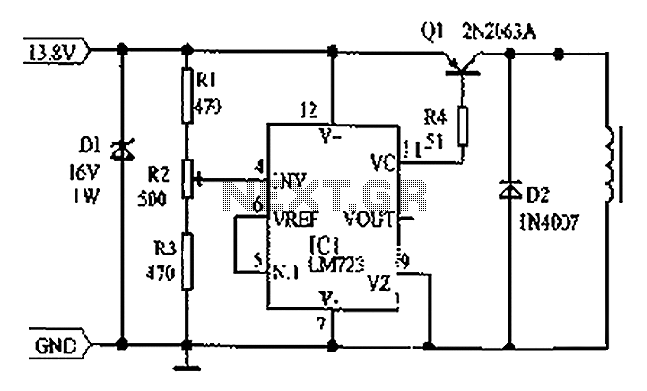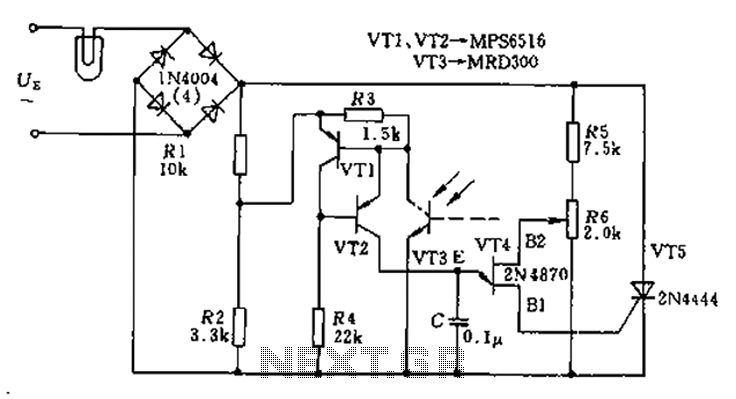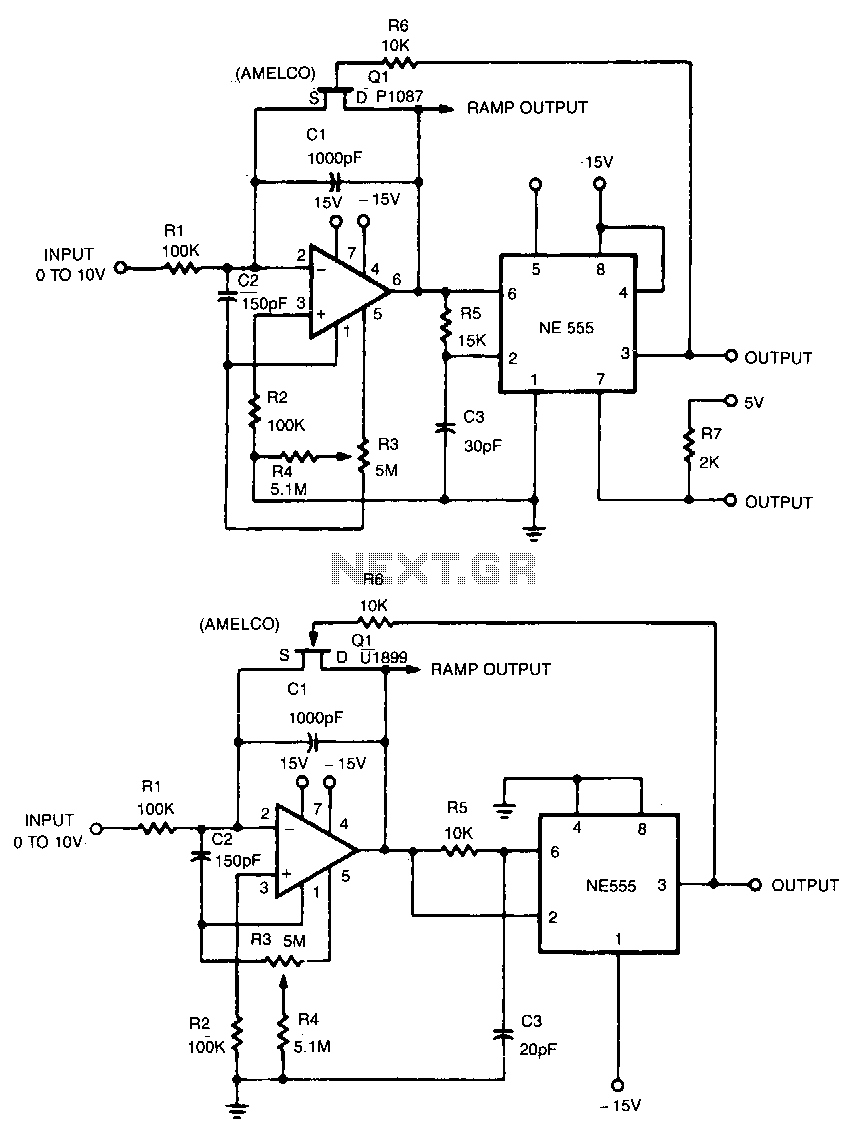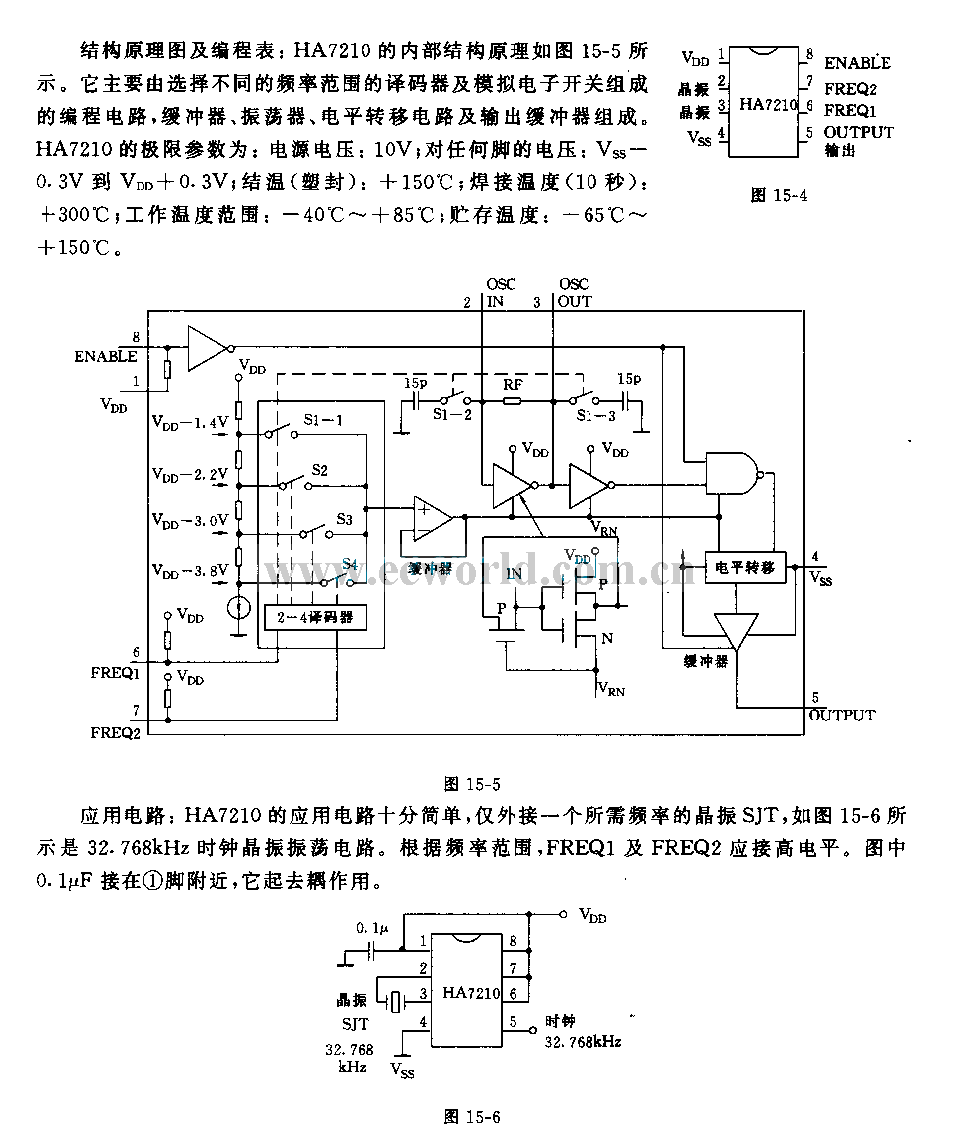
TL072 op-amp configured as voltage comparator

The Maya utilized several calendars concurrently, one of which is known as the "long count." This calendar is a continuous record of days starting from a zero date that corresponds to August 13, 3114 BC. According to the Maya calendar, when both wheels of the Maya calendar complete their rotation, it signifies the end of the world. The Maya were one of the most remarkable cultures in the New World, inhabiting regions that encompass present-day Guatemala, Belize, Honduras, El Salvador, and parts of southern Mexico, including the Yucatan Peninsula. The descendants of the ancient Maya have largely preserved their cultural heritage and continue to speak the Mayan language. By 5000 BC, the Maya had settled along the Caribbean and Pacific coasts in fishing communities. By 2000 BC, they had moved inland and embraced agriculture, with maize and beans forming the staple of their diet, supplemented by other food sources such as manioc, squash, tomatoes, peppers, fruits, and game. The study of the Maya is divided into periods: the Formative or Pre-Classic period (2000 BC-AD 300), the Classic period (AD 300-AD 900), and the Post-Classic period (AD 900-conquest). Intensive agriculture and advanced water management practices emerged during the Middle Pre-Classic period (900-300 BC) to support a population boom in the Late Pre-Classic (300 BC-AD 300). Writing was also developed during this time, with the Maya being among the first in the New World to maintain historical records. Their writing system combined ideographic and phonetic elements, primarily inscribed on stelae and stone monuments that documented civil events and calendric and astronomical knowledge. Surviving Maya pottery reflects their religious beliefs and complex mythology. Four Post-Classic Maya screenfold manuscripts, known as codices, provide insights into their calendric and astronomical calculations, rituals, offerings, and auguries. The "long count" calendar is noted for its precision compared to the Julian calendar, which was revised in Europe in 1582. The Maya were skilled astronomers, tracking solar and lunar years, eclipses, and planetary cycles, and they developed a sophisticated mathematical system employing dots and bars to represent numbers, including the concept of zero and a vigesimal positional system. Monumental architecture and historical records flourished during the Classic period, with divine kings ruling over large populations, including Tikal, which may have housed 75,000 to 100,000 residents. However, the Classic Maya cities did not survive past the 10th century, likely due to famine, foreign invasions, warfare, adverse climatic conditions, and disease, leading to what is known as the Classic Maya collapse. The Maya continued to inhabit both highland and lowland regions, but their peak was over. Civilization persisted in the northern Yucatan Peninsula, with Uxmal and Chichen Itza marking significant Post-Classic developments. Chichen Itza was likely abandoned by the 12th century, while trading towns like Tulum thrived along the Caribbean coast. In 1542, Spanish colonizers took advantage of the fragmentation of Maya states, establishing their capital at Mérida on the site of the ancient Maya city of Tiho. The last of the Maya kingdoms, Tayasal, was conquered by the Spanish in 1697.
The calendar system of the Maya was intricate, serving not only as a timekeeping mechanism but also as a vital tool for agricultural planning and religious observance. The long count calendar, in particular, provided a continuous timeline that allowed the Maya to track significant historical and astronomical events. The calendar consisted of a series of cycles, including the baktun (144,000 days), which was essential for understanding the cyclical nature of time as perceived by the Maya.
The Maya's advanced understanding of mathematics and astronomy enabled them to create calendars that were not only accurate but also deeply integrated into their cultural and spiritual lives. The use of a vigesimal system (base-20) allowed for complex calculations, while the incorporation of zero represented a significant mathematical advancement. This knowledge facilitated their ability to predict celestial events, such as eclipses, which were often imbued with religious significance.
The monumental architecture of the Maya, including pyramids and temples, served both civic and religious purposes, reflecting their societal structure and beliefs. These structures often aligned with astronomical events, demonstrating a sophisticated understanding of the relationship between the cosmos and earthly existence. The inscriptions found on stelae and codices provide valuable insights into their political history and cosmology, revealing the importance of timekeeping in governance and ritual practices.
Overall, the Maya civilization exemplified a remarkable synthesis of cultural, scientific, and religious elements, with their calendrical systems at the heart of their societal organization and worldview. The legacy of the Maya continues to influence contemporary understanding of ancient Mesoamerican cultures and their contributions to mathematics and astronomy.The Maya used several calendars simultaneously. One of them called the "long count", is a continuous record of days from a zero date that correlates to Aug. 13, 3114 BC, and is more According to maya`s celender when the both the wheel of the maya celender will complete its rotation the celender would end and that would be the END OF THE WORLD One
of the most amazing cultures of the New World inhabited a region encompassing today`s Guatemala, Belize, Honduras and El Salvador, and parts of southern Mexico-the states of Yucatan just west of Cancun Mexico, Campeche, Quintana Roo, Tabasco and Chiapas. Today this area is occupied by the descendants of the ancient Maya, the vast majority of whom have to some extent preserved their cultural heritage and still speak the Mayan language.
By 5000 BC, the Maya had settled along the Caribbean just southwest of Punta Cana Dominican Republic and along the Pacific coasts, in fishing communities. By 2000 BC the Maya had also moved inland and adopted agriculture for their subsistence. Maize and beans formed the Maya diet then as today, although many other foodstuffs-manioc, squash, tomatoes, peppers, fruit, and game-were supplements.
To study the Maya their development has been divided into periods, the earlier Maya culture is called Formative or Pre Classic (2000 BC-AD 300), the Classic period goes from AD 300 to AD 900, and subsequent civilization is known as Post Classic (AD 900-conquest). Now we know that the Maya began to develop intensive agriculture and sophisticated water management during the Middle Pre Classic (900-300 BC), surely to help support the population explosion of the Late Pre Classic (300 BC-AD 300).
During this same period, writing was invented in Mesoamerica, and the Maya began to use it during the Late Pre Classic. The Maya were the first people of the New World to keep historical records, and even if writing in the New World did not originate among the Maya, they developed and used it extensively.
The Maya wrote a mixed script, with ideographic and phonetic elements. Most of their writing survived on stelae, stone monuments very common in the Maya cities, they recount mostly civil events and record their calendric and astronomical knowledge. Maya pottery gives testimony of their religion and elaborate mythology. Four Post Classic Maya screenfold manuscripts, called codices have survived, They reveal Maya calendric and astronomical calculations, as well as rituals, offerings, and auguries for the year.
The Maya used several calendars simultaneously. One of them called the "long count", is a continuous record of days from a zero date that correlates to Aug. 13, 3114 BC, and is more precise than the Julian calendar revised in Europe in 1582. The Maya were great astronomers and kept track of the solar and lunar years, eclipses and the cycles of visible planets.
To carry out their calendric and astronomical calculations they developed a sophisticated mathematical system where units are written with dots and bars are used to represent five units. They discovered and used the zero as well as a vigesimal positioning system, similar to the decimal positioning system we use today.
During the Classic period monumental architecture and stelae with historical records were erected, on these monuments the Maya rulers reigned as divine kings. The Maya thrived during the Late Classic (AD 550-900), and art, architecture, writing, commerce and intensive agricultural practices flourished all through the Maya lands.
More than 2 million people may have lived in the area, and it is estimated that Tikal, the largest center, had a population of 75, 000-100, 000. However, the Classic Maya cities did not survive into the 10th century. It seems that the system of rule that had served them well for centuries failed. Probably faced with famine, foreign invasion, chronic warfare, adverse climatic conditions and perhaps disease, the Classic period ended in what is called the Classic Maya collapse.
The Maya continued to live in both highlands and lowlands but the period of their greatest splendor was over. In the northern Yucatan peninsula, civilization continued at Uxmal and the surrounding area. The Post Classic saw the splendor of Chichen Itza. Chichen Itza was probably abandoned by the 12th century. Trading towns survived along the Caribbean coast. Tulum, a spectacular walled city and a major trading town, located above the coastline of what is now the state of Quintana Roo on Mexico`s Caribbean seashore is a great example of these.
This city when seen from a Spanish ship was compared to Seville. The Maya of Yucatan finally broke up into small states and the Spanish took advantage of this division to take control in 1542. In that year, after having been fought back during 15 years, they were able to establish their own capital at MG©rida, (in today`s State of Yucatan, Mexico) on the site of a Maya city called Tiho.
The last of the Maya kingdoms, Tayasal, in Lake Peten Itza (Guatemala), was conquered by the Spanish in 1697, 155 years after the conquest of Merida. 1. - A catalog that registers all the days of a year, distributed in weeks and months, with astronomical data, such as time of sunrise and sunset, the moon phases, or with religious information such as patron saints and festivities.
2. - A time division system, all of the world`s cultures have their calendars initially lunar and afterwards lunar-solar. The Chaldeans and Babylonians passed their calendric knowledge to the Egyptians, these in turn to the Greeks and these finally to the Romans who adopted it for their common use.
From the beginning of civilization there has been a very close link between astrology and the development of the calendar. The importance of this connection is evident considering the need to determine the times for the most basic functions of early societies such as agriculture and the celebration of religious events.
The most ancient calendars were probably based on lunar observation since the Moon`s phases take place in an easily observed interval. It is most likely that the sighting of the crescent Moon marked a new time period. It was observed that recurrent Moon`s phases were about 29 days apart. This gave birth to the first lunar calendars containing 29-30 days per time period (month), but since the sum of twelve or thirteen months differ from the length of a tropical year this calendar was not completely suitable for agricultural practices.
Due to this difference and in order to keep in step with the Sun, the lunar-solar calendars were born, adding a complementary time period to the total of days in the Moon`s cycles so as to equal the solar year. Many of these calendars, with variations, existed through time in different areas of the world. In pre-Columbian America the Maya and Aztec calendars were very important. They are remarkably accurate and are made of 18 months of 20 days plus five supplemental days. Later the solar calendars came to be, for example the Julian calendar which was instituted in Rome by Julius Caesar in 46 BC.
This calendar set the year`s length at 365 days and added one day to the year every four years. Pope Gregory XIII modified this calendar in 1582. And even though the Gregorian calendar is a solar calendar in the sense that it does not take into consideration the Moon in its calculations, it does contain rules for determining Easter and other religious holidays which are based on both the Sun and the Moon. The Gregorian calendar is used today in most of the world, it is divided into the twelve months we all know.
Historically people have sensed the need to have a fixed point to start their time calculations. In order to do this generally the starting point has been determined either by a historical event (the birth of Jesus) or by a hypothetical event (the date of the world`s creation). Of all known cultures the Maya seem to have been the first to discover the need for such a date, using probably an astronomically significant or a hypothetical event they placed at 3114 BC.
The Large Hadron Collider (LHC) is a gigantic scientific instrument near Geneva, where it spans the border between Switzerland and France about 100m underground. It is a particle accelerator used by physicists to study the smallest known particles the fundamental building blocks of all things.
It will revolutionise our understanding, from the minuscule world deep within atoms to the vastness of the Universe. Two beams of subatomic particles called "hadrons" either protons or lead ions travel in opposite directions inside the circular accelerator, gaining energy with every lap.
Physicists use the LHC to recreate the conditions just after the Big Bang, by colliding the two beams head-on at very high energy. Teams of physicists from around the world then analyse the particles created in the collisions using special detectors in a number of experiments dedicated to the LHC.
There are many theories as to what will result from these collisions. For decades, the Standard Model of particle physics has served physicists well as a means of understanding the fundamental laws of Nature, but it does not tell the whole story. Only experimental data using the high energies reached by the LHC can push knowledge forward, challenging those who seek confirmation of established knowledge, and those who dare to dream beyond the paradigm.
We live in a world of matter everything in the Universe, including ourselves, is made of matter. Antimatter is like a twin version of matter, but with opposite electric charge. At the birth of the Universe, equal amounts of matter and antimatter should have been produced in the Big Bang. But when matter and antimatter particles meet, they annihilate each other, transforming into energy. Somehow, a tiny fraction of matter must have survived to form the Universe we live in today, with hardly any antimatter left.
Why does Nature appear to have this bias for matter over antimatter The LHCb experiment will be looking for differences between matter and antimatter to help answer this question. Previous experiments have already observed a tiny behavioural difference, but what has been seen so far is not nearly enough to account for the apparent matter antimatter imbalance in the Universe.
Matter, from which everything in the Universe is made, is believed to have originated from a dense and hot cocktail of fundamental particles. Today, the ordinary matter of the Universe is made of atoms, which contain a nucleus composed of protons and neutrons, which in turn are made of quarks bound together by other particles called gluons.
The bond is very strong, but in the very early Universe conditions would have been too hot and energetic for the gluons to hold the quarks together. Instead, it seems likely that during the first microseconds after the Big Bang the Universe would have contained a very hot and dense mixture of quarks and gluons called quark gluon plasma.
The ALICE experiment will use the LHC to recreate conditions similar to those just after the Big Bang, in particular to analyse the properties of the quark-gluon plasma. Einstein showed that the three dimensions of space are related to time. Subsequent theories propose that further hidden dimensions of space may exist; for example, string theory implies that there are additional spatial dimensions yet to be observed.
These may become detectable at very high energies, so data from all the detectors will be carefully analysed to look for signs of extra dimensions. The LHC was built to help scientists to answer key unresolved questions in particle physics. The unprecedented energy it achieves may even reveal some unexpected results that no one has ever thought of!
For the past few decades, physicists have been able to describe with increasing detail the fundamental particles that make up the Universe and the interactions between them. This understanding is encapsulated in the Standard Model of particle physics, but it contains gaps and cannot tell us the whole story.
To fill in the missing knowledge requires experimental data, and the next big step to achieving this is with LHC. 🔗 External reference
The calendar system of the Maya was intricate, serving not only as a timekeeping mechanism but also as a vital tool for agricultural planning and religious observance. The long count calendar, in particular, provided a continuous timeline that allowed the Maya to track significant historical and astronomical events. The calendar consisted of a series of cycles, including the baktun (144,000 days), which was essential for understanding the cyclical nature of time as perceived by the Maya.
The Maya's advanced understanding of mathematics and astronomy enabled them to create calendars that were not only accurate but also deeply integrated into their cultural and spiritual lives. The use of a vigesimal system (base-20) allowed for complex calculations, while the incorporation of zero represented a significant mathematical advancement. This knowledge facilitated their ability to predict celestial events, such as eclipses, which were often imbued with religious significance.
The monumental architecture of the Maya, including pyramids and temples, served both civic and religious purposes, reflecting their societal structure and beliefs. These structures often aligned with astronomical events, demonstrating a sophisticated understanding of the relationship between the cosmos and earthly existence. The inscriptions found on stelae and codices provide valuable insights into their political history and cosmology, revealing the importance of timekeeping in governance and ritual practices.
Overall, the Maya civilization exemplified a remarkable synthesis of cultural, scientific, and religious elements, with their calendrical systems at the heart of their societal organization and worldview. The legacy of the Maya continues to influence contemporary understanding of ancient Mesoamerican cultures and their contributions to mathematics and astronomy.The Maya used several calendars simultaneously. One of them called the "long count", is a continuous record of days from a zero date that correlates to Aug. 13, 3114 BC, and is more According to maya`s celender when the both the wheel of the maya celender will complete its rotation the celender would end and that would be the END OF THE WORLD One
of the most amazing cultures of the New World inhabited a region encompassing today`s Guatemala, Belize, Honduras and El Salvador, and parts of southern Mexico-the states of Yucatan just west of Cancun Mexico, Campeche, Quintana Roo, Tabasco and Chiapas. Today this area is occupied by the descendants of the ancient Maya, the vast majority of whom have to some extent preserved their cultural heritage and still speak the Mayan language.
By 5000 BC, the Maya had settled along the Caribbean just southwest of Punta Cana Dominican Republic and along the Pacific coasts, in fishing communities. By 2000 BC the Maya had also moved inland and adopted agriculture for their subsistence. Maize and beans formed the Maya diet then as today, although many other foodstuffs-manioc, squash, tomatoes, peppers, fruit, and game-were supplements.
To study the Maya their development has been divided into periods, the earlier Maya culture is called Formative or Pre Classic (2000 BC-AD 300), the Classic period goes from AD 300 to AD 900, and subsequent civilization is known as Post Classic (AD 900-conquest). Now we know that the Maya began to develop intensive agriculture and sophisticated water management during the Middle Pre Classic (900-300 BC), surely to help support the population explosion of the Late Pre Classic (300 BC-AD 300).
During this same period, writing was invented in Mesoamerica, and the Maya began to use it during the Late Pre Classic. The Maya were the first people of the New World to keep historical records, and even if writing in the New World did not originate among the Maya, they developed and used it extensively.
The Maya wrote a mixed script, with ideographic and phonetic elements. Most of their writing survived on stelae, stone monuments very common in the Maya cities, they recount mostly civil events and record their calendric and astronomical knowledge. Maya pottery gives testimony of their religion and elaborate mythology. Four Post Classic Maya screenfold manuscripts, called codices have survived, They reveal Maya calendric and astronomical calculations, as well as rituals, offerings, and auguries for the year.
The Maya used several calendars simultaneously. One of them called the "long count", is a continuous record of days from a zero date that correlates to Aug. 13, 3114 BC, and is more precise than the Julian calendar revised in Europe in 1582. The Maya were great astronomers and kept track of the solar and lunar years, eclipses and the cycles of visible planets.
To carry out their calendric and astronomical calculations they developed a sophisticated mathematical system where units are written with dots and bars are used to represent five units. They discovered and used the zero as well as a vigesimal positioning system, similar to the decimal positioning system we use today.
During the Classic period monumental architecture and stelae with historical records were erected, on these monuments the Maya rulers reigned as divine kings. The Maya thrived during the Late Classic (AD 550-900), and art, architecture, writing, commerce and intensive agricultural practices flourished all through the Maya lands.
More than 2 million people may have lived in the area, and it is estimated that Tikal, the largest center, had a population of 75, 000-100, 000. However, the Classic Maya cities did not survive into the 10th century. It seems that the system of rule that had served them well for centuries failed. Probably faced with famine, foreign invasion, chronic warfare, adverse climatic conditions and perhaps disease, the Classic period ended in what is called the Classic Maya collapse.
The Maya continued to live in both highlands and lowlands but the period of their greatest splendor was over. In the northern Yucatan peninsula, civilization continued at Uxmal and the surrounding area. The Post Classic saw the splendor of Chichen Itza. Chichen Itza was probably abandoned by the 12th century. Trading towns survived along the Caribbean coast. Tulum, a spectacular walled city and a major trading town, located above the coastline of what is now the state of Quintana Roo on Mexico`s Caribbean seashore is a great example of these.
This city when seen from a Spanish ship was compared to Seville. The Maya of Yucatan finally broke up into small states and the Spanish took advantage of this division to take control in 1542. In that year, after having been fought back during 15 years, they were able to establish their own capital at MG©rida, (in today`s State of Yucatan, Mexico) on the site of a Maya city called Tiho.
The last of the Maya kingdoms, Tayasal, in Lake Peten Itza (Guatemala), was conquered by the Spanish in 1697, 155 years after the conquest of Merida. 1. - A catalog that registers all the days of a year, distributed in weeks and months, with astronomical data, such as time of sunrise and sunset, the moon phases, or with religious information such as patron saints and festivities.
2. - A time division system, all of the world`s cultures have their calendars initially lunar and afterwards lunar-solar. The Chaldeans and Babylonians passed their calendric knowledge to the Egyptians, these in turn to the Greeks and these finally to the Romans who adopted it for their common use.
From the beginning of civilization there has been a very close link between astrology and the development of the calendar. The importance of this connection is evident considering the need to determine the times for the most basic functions of early societies such as agriculture and the celebration of religious events.
The most ancient calendars were probably based on lunar observation since the Moon`s phases take place in an easily observed interval. It is most likely that the sighting of the crescent Moon marked a new time period. It was observed that recurrent Moon`s phases were about 29 days apart. This gave birth to the first lunar calendars containing 29-30 days per time period (month), but since the sum of twelve or thirteen months differ from the length of a tropical year this calendar was not completely suitable for agricultural practices.
Due to this difference and in order to keep in step with the Sun, the lunar-solar calendars were born, adding a complementary time period to the total of days in the Moon`s cycles so as to equal the solar year. Many of these calendars, with variations, existed through time in different areas of the world. In pre-Columbian America the Maya and Aztec calendars were very important. They are remarkably accurate and are made of 18 months of 20 days plus five supplemental days. Later the solar calendars came to be, for example the Julian calendar which was instituted in Rome by Julius Caesar in 46 BC.
This calendar set the year`s length at 365 days and added one day to the year every four years. Pope Gregory XIII modified this calendar in 1582. And even though the Gregorian calendar is a solar calendar in the sense that it does not take into consideration the Moon in its calculations, it does contain rules for determining Easter and other religious holidays which are based on both the Sun and the Moon. The Gregorian calendar is used today in most of the world, it is divided into the twelve months we all know.
Historically people have sensed the need to have a fixed point to start their time calculations. In order to do this generally the starting point has been determined either by a historical event (the birth of Jesus) or by a hypothetical event (the date of the world`s creation). Of all known cultures the Maya seem to have been the first to discover the need for such a date, using probably an astronomically significant or a hypothetical event they placed at 3114 BC.
The Large Hadron Collider (LHC) is a gigantic scientific instrument near Geneva, where it spans the border between Switzerland and France about 100m underground. It is a particle accelerator used by physicists to study the smallest known particles the fundamental building blocks of all things.
It will revolutionise our understanding, from the minuscule world deep within atoms to the vastness of the Universe. Two beams of subatomic particles called "hadrons" either protons or lead ions travel in opposite directions inside the circular accelerator, gaining energy with every lap.
Physicists use the LHC to recreate the conditions just after the Big Bang, by colliding the two beams head-on at very high energy. Teams of physicists from around the world then analyse the particles created in the collisions using special detectors in a number of experiments dedicated to the LHC.
There are many theories as to what will result from these collisions. For decades, the Standard Model of particle physics has served physicists well as a means of understanding the fundamental laws of Nature, but it does not tell the whole story. Only experimental data using the high energies reached by the LHC can push knowledge forward, challenging those who seek confirmation of established knowledge, and those who dare to dream beyond the paradigm.
We live in a world of matter everything in the Universe, including ourselves, is made of matter. Antimatter is like a twin version of matter, but with opposite electric charge. At the birth of the Universe, equal amounts of matter and antimatter should have been produced in the Big Bang. But when matter and antimatter particles meet, they annihilate each other, transforming into energy. Somehow, a tiny fraction of matter must have survived to form the Universe we live in today, with hardly any antimatter left.
Why does Nature appear to have this bias for matter over antimatter The LHCb experiment will be looking for differences between matter and antimatter to help answer this question. Previous experiments have already observed a tiny behavioural difference, but what has been seen so far is not nearly enough to account for the apparent matter antimatter imbalance in the Universe.
Matter, from which everything in the Universe is made, is believed to have originated from a dense and hot cocktail of fundamental particles. Today, the ordinary matter of the Universe is made of atoms, which contain a nucleus composed of protons and neutrons, which in turn are made of quarks bound together by other particles called gluons.
The bond is very strong, but in the very early Universe conditions would have been too hot and energetic for the gluons to hold the quarks together. Instead, it seems likely that during the first microseconds after the Big Bang the Universe would have contained a very hot and dense mixture of quarks and gluons called quark gluon plasma.
The ALICE experiment will use the LHC to recreate conditions similar to those just after the Big Bang, in particular to analyse the properties of the quark-gluon plasma. Einstein showed that the three dimensions of space are related to time. Subsequent theories propose that further hidden dimensions of space may exist; for example, string theory implies that there are additional spatial dimensions yet to be observed.
These may become detectable at very high energies, so data from all the detectors will be carefully analysed to look for signs of extra dimensions. The LHC was built to help scientists to answer key unresolved questions in particle physics. The unprecedented energy it achieves may even reveal some unexpected results that no one has ever thought of!
For the past few decades, physicists have been able to describe with increasing detail the fundamental particles that make up the Universe and the interactions between them. This understanding is encapsulated in the Standard Model of particle physics, but it contains gaps and cannot tell us the whole story.
To fill in the missing knowledge requires experimental data, and the next big step to achieving this is with LHC. 🔗 External reference





